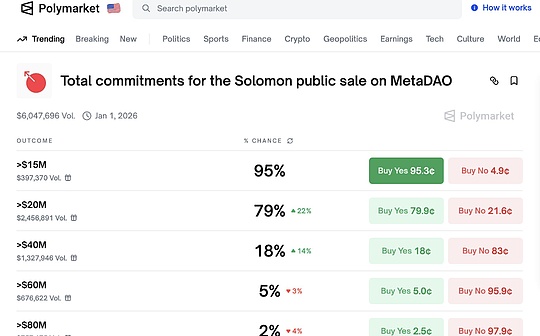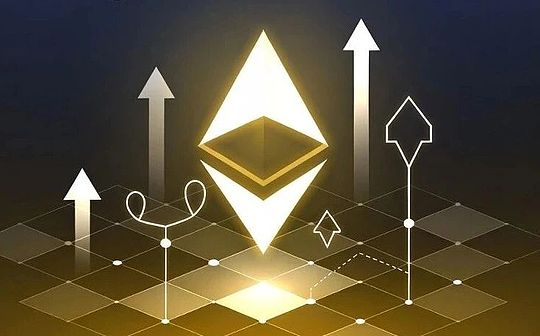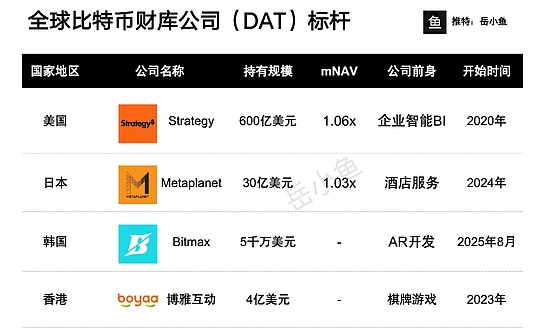
Author: IOTEX FOUNDATION, Translation: Bit Chain Vision Xiaozou
Recently, DEPIN has entered the mainstream of encryption, bringing some problems and challenges, such as decentralization, scalability, verification, authentication management and data trust.This article will explore some of these issues, as well as several solutions provided by the IOTEX core team through its product W3BSTREAM. W3BSTEAM is a scalable architecture calculated by Rollup as the centered on chain data.
1. Depin
DEPIN (decentralized physical infrastructure network) represents a major change in the traditional IoT system based on Web2.For a long time, the Internet of Things system is either cloud -centered, and data from physical equipment is transmitted to the cloud through the Internet of Things gateway for processing and storage, or the edge (edge) as the center, which involves the edge server that processs data closer to the source data.EssenceAlthough these architectures are very popular in the Internet of Things, they are essentially centralized or mixed.However, DEPIN introduced a method of innovation by integrating the three core technologies -blockchain, the Internet of Things and tokens.This integration supports the establishment of infrastructure networks and machine economies from the grassroots level.DEPIN’s uniqueness is that its community -driven model is encouraged to build applications for common interests, rather than a single company for central deployment and maintenance.
There are two main types of depin:
-
Physical Resources Network (PRN): This type of network focuses on position -related hardware and deliver unique goods or services.For example, wireless connections, geographical space intelligence obtained through specific regional sensors, and mobile applications such as automotive services.
-
Digital Resource Network (DRN): DRN incentives can be replaced with hardware deployment (such as computing power, storage or bandwidth), and supports large -scale network creation for tasks such as video/audio rendering or storage services without required to be particularly located in the location.hardware.
DEPIN is rich in ecology, and many startups are exploring different aspects, such as decentralized computing, storage, bandwidth networks and communication protocols.No matter what kind of project belongs to, DEPIN faces its own inherent challenges, such as establishing system authentication and solving privacy issues, especially the scalability.
2. DEPIN scalability challenge
As mentioned earlier, scalability is a key challenge, which is determined by the inherent characteristics of the DEPIN application.DEPIN usually contains large networks with a large number of devices to generate a large amount of data.At the same time, although the integration of blockchain technology provides a strong foundation for trust, it also brings its own limitations.The blockchain is famous for its high trust, but is subject to limited processing capacity and high data storage.The comparison of this extensive network and data demand and limited processing capabilities of the blockchain undoubtedly highlights the scalability challenges facing the DEPIN application.
Ethereum Rollup method
The method of solving scalability problems that Ethereum has always adopted is the roadmap centered on Rollup.This strategy is fundamentally rethinking data processing and transaction execution methods in the blockchain network.
(1) L2 Rollup: Ethereum advocates uninstalling and execution to the L2 Rollup network, instead of relying on L1 (main blockchain) for all work.These networks run with the main chain, but the way to deal with transactions is more effective.
(2) Batch transaction: L2 network collects transactions from the L1 network and conducts batch processing.By packing multiple transactions in batches, the ROLLUP network can handle trading packages more efficiently than one by one on the main chain.
(3) Proof of generation and verification: L2 network generates proof after batch processing transactions.This proof is a kind of encryption evidence, which is effective for verifying that all transactions processed in the Rollup network are effective.The L1 network then verified this proof through smart contracts.This process ensures the integrity of transactions on the L2 network.
(4) L1 trust anchor: Although the data processing is uninstalled to the L2 network, the L1 blockchain retains its role as the core trust anchor.It realizes this by verifying proof from the L2 network, thereby maintaining the integrity and security of the entire network.
(5) Effective status conversion: L1 network receives these proofs and corresponding status conversion, which can handle these transactions more efficiently.This method reduces the burden on the L1 network, enabling it to play the role of trusted anchors more effectively, while dealing with less but more critical tasks.
This method centered on Rollup greatly enhances Ethereum to greatly enhance scalability, and it can be applied to DEPIN.
3. W3BSTREAM: L2 Rollup specifically for DEPIN
As mentioned earlier, the Rollup method can also be used to expand the DEPIN application.This method is the core concept behind IOTEX W3BSTREAM. IOTEX’s L2 network is specially created to expand the DEPIN project. It can compress (aggregate) into smaller, verifiable zero -knowledge proofs to trigger a trigger on the transaction on the chain transaction.EssenceNow let’s take a look at the main components of this method:
-
Sovereign smart devices: These are crucial to the credibility of the DEPIN project.These devices are deployed in the real physical world, which can not only collect data, but also prove the credibility of the data collection process.
-
Data availability layer: Data availability layer is responsible for temporary storage data received from the device.It can be both on the chain or under the chain. Because of its short -term nature, it is different from permanent storage.
-
Decentralized Sorting Network (DSN): DSN reached a consensus from the data collected by the device and stored it on the data availability layer.This consensus is necessary for any meaningful calculation.
-
Decentralized aggregation network: The network is responsible for calculating, scratching data from the data availability layer, and generating zero -knowledge proof of polymerization for one or more devices.
-
L1 network: Intelligent contracts on L1 can be used as a verification device to verify zero -knowledge proof generated by the polymer under the chain.In this way, L1 is used as a trust foundation and settlement layer for the DEPIN application.The high -level flowchart of this architecture is as follows:
The following sections will analyze this architecture more in detail, start with how to collect credible data, then explain data pre -processing and data availability, and then discuss the process of aggregation proof.
(1) Trustical data collection
In DEPIN applications, credible data collection is crucial, mainly through two methods: TEE -based (trusted execution environment) and zero -knowledge -based proof (ZKP).
-
Based on Tee: TEE collects code to ensure secure data collection by collecting code in equipment protection areas.This method also includes remote authentication, supporting external verification and code integrity of device operations.
-
Based on ZKP: This method enables the device to prove the accuracy of its data collection without leaking the underlying data.It will be different according to the performance of the device. For powerful equipment, it will be generated with a plate -loaded ZKP. It is generated remotely for more restricted devices.
The combination of Tee and ZKP has enhanced the credibility of DEPIN application data collection, which affects the overall effectiveness of related financial systems.Future research will focus on improving ZKP efficiency, especially for equipment with multiple sensors or complex data collection requirements.
(2) Data pre -processing and data availability
The second main component of the DEPIN architecture is data pre -processing and ensuring data availability, which is supported by decentralized sequencing networks.The network provides services for multiple DEPIN projects and solves the challenges of device diversity, especially the challenges in communication protocols.
Decentralized sorting network:
-
Function: Perform data pre -processing.Data comes from different devices, and the network will process data to ensure the consistency and compatibility of the data.
-
Verification process: The nodes in the network pass the two -step verification data: (1) to confirm the effectiveness of the data collection process. You can check the certification report provided by the device that supports the Tee device, or it can be confirmed by verifying the proof of the device.(2) Verify the signature of the device to ensure the authenticity of the data source.
Data storage and availability:
-
After pre -processing: After preprocessing and reaching consensus within the network, the data availability layer stored in a specific item is available.
-
Custom storage solution: The project can flexibly select the favorite data availability layer.This is implemented by configured storage adapter, which supports stored data in the selected data availability layer.
This part of the DEPIN architecture plays a key role in standardization and data flow from different devices to ensure that the data is uniformly processed and effectively stored.
(3) Data proof agglomeration
The third component of the DEPIN architecture focuses on the generation of aggregation proof. This is an essential process to verify the calculation of the DEPIN project.
Polyteer node and calculation pool:
The network consists of a polymer node, which forms a chain computing resource pool, sharing between all DEPIN items.These nodes are based on the periodic monitor on the chain to select a leisure polymer to handle the computing tasks of a specific DEPIN project.
Polymerors node execution task:
The selected nodes retrieve data from the data availability layer, and then perform the necessary calculations and generate proof for the DEPIN project.The proof was sent to the L1 smart contract for verification, and the node returned to the idle state.
In order to generate a convergence proof, the system will use a layered polymerization circuit, which is composed of the following components:
-
Data compression circuit: Its function is similar to the Merkel tree, and all the collected data are from a specific Merkel tree root.
-
Signature batch verification circuit: Batch checking data validity from the device, each device is associated with a signature.
-
DEPIN computing circuit: Prove that the specific calculation logic of the DEPIN project (such as verifying the number of steps in medical care projects or the energy generated by solar power plants) is correctly implemented.
-
Prove the aggregation circuit: The aggregation of all proofs is a proof for final verification for L1 smart contracts.
Data proof aggregation is very important for ensuring the integrity and verification of the DEPIN project calculation, and it provides a reliable and effective method for the calculation and data processing of the verification chain.
4. Conclusion
In short, W3BSTREAM’s efficiently managing data pre -processing through its decentralized sorting network helps DEPIN’s scalability.It supports aggregation proof, which is essential for verifying the complex calculations of cross -large networks.By promoting the calculation of the chain and providing a powerful mechanism for verification on the chain, W3BSTREAM significantly improved the throughput and efficiency of the DEPIN application.Although W3BSTREAM relies on the IOTEX blockchain (because of its speed, security and cost benefits, IOTEX is still the perfect choice of emerging DEPIN applications), it can support any existing DEPIN project on any blockchain.Its architecture (supports scalable security infrastructure) makes it an important part of a wider decentralized network ecosystem.








